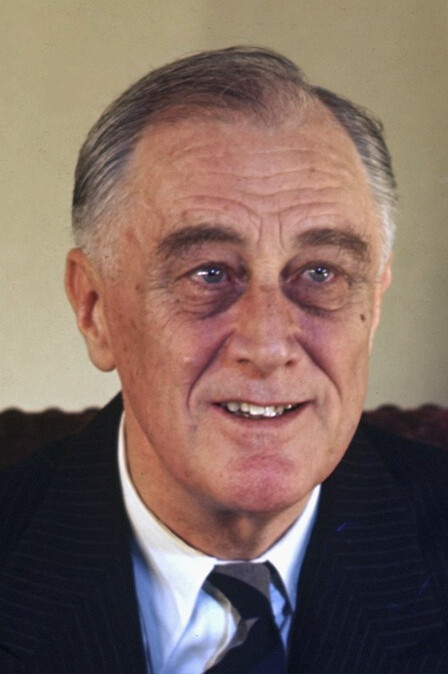Supreme HQ Allied Expeditionary Force (March 21, 1945)
FROM
(A) SHAEF MAIN
ORIGINATOR
PRD, Communique Section
DATE-TIME OF ORIGIN
211100A March
TO FOR ACTION
(1) AGWAR
(2) NAVY DEPARTMENT
TO (W) FOR INFORMATION (INFO)
(3) TAC HQ 12 ARMY GP
(4) MAIN 12 ARMY GP
(5) AIR STAFF
(6) ANCXF
(7) EXFOR MAIN
(8) EXFOR REAR
(9) DEFENSOR, OTTAWA
(10) CANADIAN C/S, OTTAWA
(11) WAR OFFICE
(12) ADMIRALTY
(13) AIR MINISTRY
(14) UNITED KINGDOM BASE
(15) SACSEA
(16) CMHQ (Pass to RCAF & RCN)
(17) COM ZONE
(18) SHAEF REAR
(19) SHAEF MAIN
(20) PRO, ROME
(21) HQ SIXTH ARMY GP
(REF NO.)
NONE
(CLASSIFICATION)
IN THE CLEAR
Communiqué No. 347
UNCLASSIFIED: Enemy resistance west of the Rhine and south of the Moselle rivers has been almost completely disorganized by swift Allied advances. Our units have reached the Rhine, or points near it, at several places. We have reached the vicinity of Mainz and Bodenheim, and have captured Worms. Numerous towns have been overrun and captured including Alzey, southeast of Bad Kreuznach, and Niederhausen, Sankt Alban and Rockenhausen south of Bad Kreuznach. Elements of our armies advancing from the north and west made contact 12 miles west of Kaiserslautern, initially bypassed by an armored spearhead, has been entered by both armored and infantry units. Enemy supply installations have been overrun at some points and numbers of weapons and vehicles have been captured.
In the Saarlouis area our units cleared the towns of Roden, Fraulautern, Ensdorf, and Volkingen and advanced eastward to a point ten miles west of Neunkirchen. Northeast of Neunkirchen we captured Ottweiler and Furth. Saarbrucken, chief city of the Saar Basin, was taken in the rapid advance of our units which crossed the Saar River west of the city. Zweibrucken, 20 miles farther east, also was captured. We are through the Siegried Line on a wide front in this area, with enemy resistance disorganized at some points. Progress was slower in the rugged Hardt Mountains area. In the Rhine Valley, Kapsweyer, northeast of Wissenbourg, was captured.
In the triangle formed by Saarbrücken, Mainz, and Karlsruhe, fighter bombers struck throughout the day at enemy transport, guns and tanks retreating toward the Rhine. In a dawn attack between Bad Dürkheim and Frankenstein, 141 vehicles were destroyed and many others damaged. Our Rhine bridgehead at Remagen has been expanded to a length of 22½ miles and a depth of eight miles. In the north end of the bridgehead, we cleared Oberkassel and entered the outskirts of Beuel, across the Rhine from Bonn. East of Beuel we reached Holziar and Stieldorf against light resistance. Northeast of Bad Honnef we captured Eudenbach and an airfield near the town. We repulsed two tank-supported counterattacks at the airfield. The enemy directed heavy artillery and mortar fire at the center of the bridgehead.
Farther south, resistance was light and our units gained 4,000 yards to reach the vicinity of Leutesdorf.
Allied forces in the west captured 13,873 prisoners 19 March.
The offensive against the enemy’s communications was continued yesterday by heavy, medium, light and fighter-bombers. Targets in Holland and in western Germany from north of the Ruhr southward to Karlsruhe were attacked. Among the objectives were the rail centers of Bocholt and Dorsten; railyards at Recklinghausen, Hamm, Geseke, Paderborn and Kassel; and road junctions at Gronau, Vreden and Westerburg. German airfields at Ahlen, Handorf, Haltern, Gûtersloh, Lippstadt, Geseke and Paderborn were attacked by fighter bombers. Fifty enemy aircraft were destroyed on the ground and over 100 damaged in the course of these attacks.
An ammunition dump at Sythen was attacked by medium and light bombers while fighter-bombers hit and ordnance depot at Marburg. Oil refineries at Hemmingstedt and Hamburg, submarine yards at Hamburg, and other targets in the port of Hamburg, were attacked by a strong force of escorted heavy bombers. Eleven enemy aircraft were shot down in the course of these operations. According to reports so far received four of our bombers and nine fighters are missing.
Last night, heavy bombers were over Germany with the synthetic oil plant at Böhlen and the oil refinery at Hemmingstedt as the main objectives. Light bombers again attacked targets in Berlin.
COORDINATED WITH: G-2, G-3 to C/S
THIS MESSAGE MAY BE SENT IN CLEAR BY ANY MEANS
/s/
Precedence
“OP” - AGWAR
“P” - Others
ORIGINATING DIVISION
PRD, Communique Section
NAME AND RANK TYPED. TEL. NO.
D. R. JORDAN, Lt Col FA4655
AUTHENTICATING SIGNATURE
/s/
